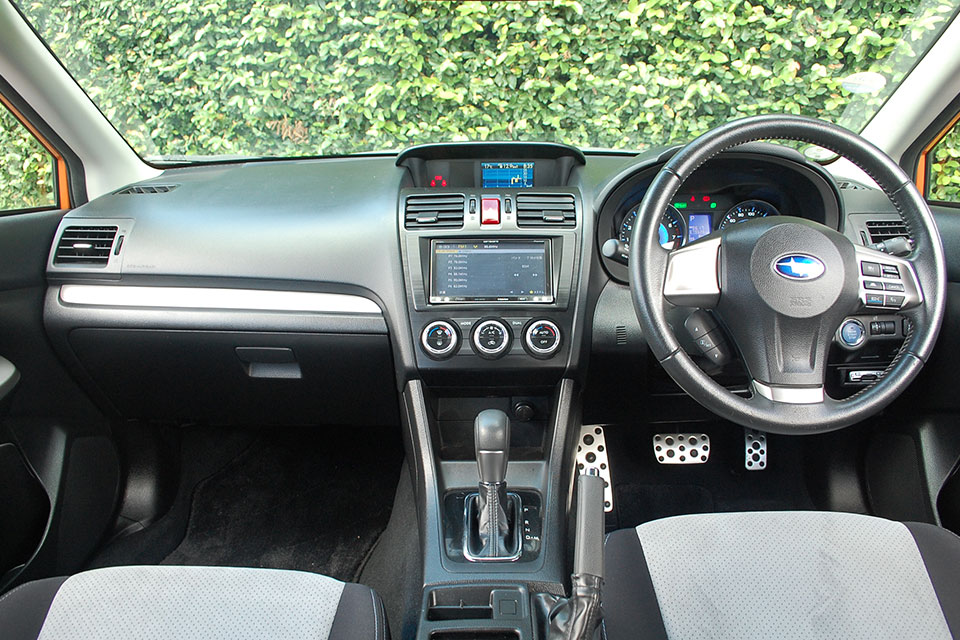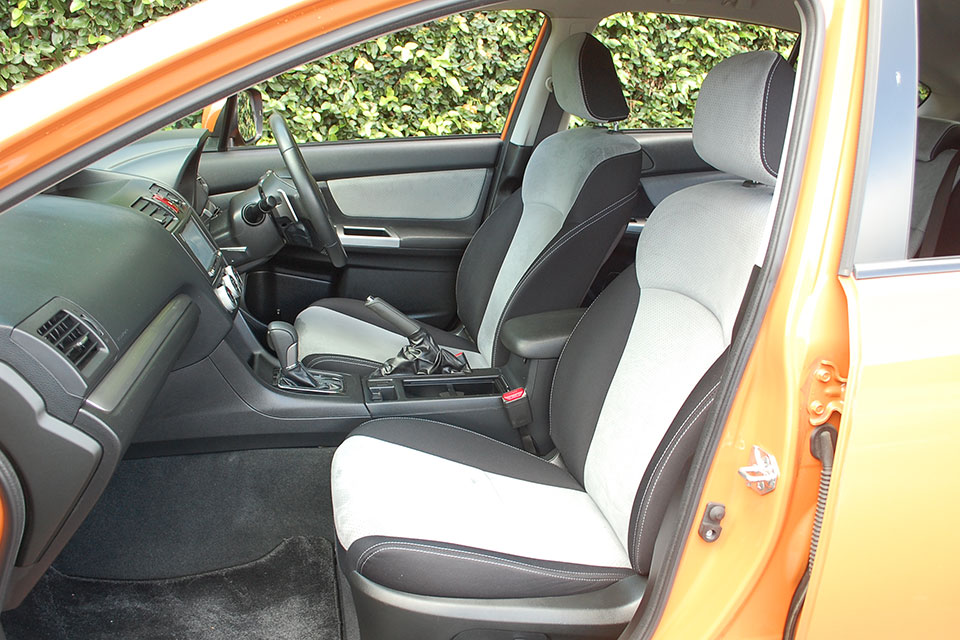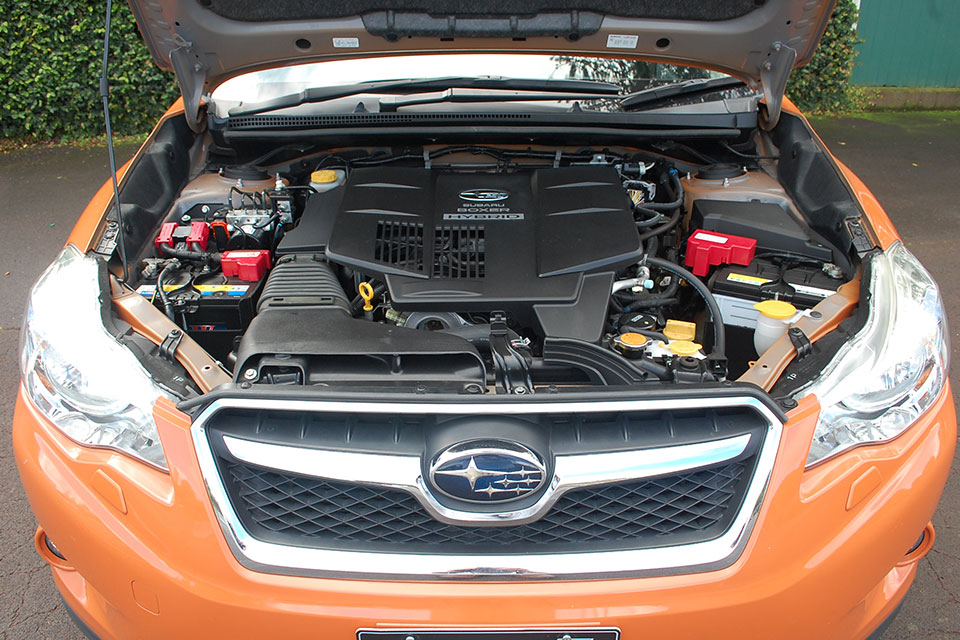Subaru Impreza XV 2012-2017 used car review
The Subaru XV is a small hatchback with the ride height looks of an SUV. It is a brilliant combination of both.

The Subaru XV is a small hatchback with the ride height looks of an SUV. It is a brilliant combination of both.
The Subaru XV is part of the Impreza small car range. Like the Outback is to the Legacy model, the XV is a crossover or SUV version of the standard car. The key differences include additional body cladding, a raised 220mm ride height, unique styling and roof rails. Japanese models - like the vehicle reviewed here - are available with a fuel-saving hybrid option.
Inside and out
While it shares its design, and most of its styling, with the standard Impreza, there are many features unique to the XV model. The front lower bumper, side sills, and rear are chunkier with an off-road look. The wheel arches and bottom of the vehicle are clad in thick black plastic for protection. Large roof rails add practicality. The additional ride height - the XV sits 220mm off the ground - also makes the model stand out. It is also 40mm wider.
While the XV purports to be an SUV, inside it is the same format as a normal hatchback - that means no raised seat height. The interior feels well put together and durable. The steering wheel is leather and features controls for the trip computer screen that seats at the top of the dash. The stereo on most import models is an aftermarket touchscreen which will require a band expander. The climate control features different settings for the driver and passenger and is controlled via easy-to-use dials.
The XV seats in the test car are finished in a pleasant light performed fabric with dark bolsters. The concern with this fabric, however, is that it is likely to show marks after some time. The seats themselves are excellent, with medium firmness and good side and under-leg support. The driver's seat can be adjusted for height manually. Rear seat head and legroom are very good, although the width is a little tight and any centre passenger is likely to feel squeezed.
Another downside to being hatchback rather than SUV shaped is the boot - at 340 litres of capacity, it is only average in size. It is well-shaped, with little side intrusion and a square opening. The rear seats split and fold 60/40 for additional load space. The roof rails also make it easy to add accessories like bike, ski or kayak carriers - or a roof box for additional luggage.
On the road
Only one engine is available in the XV - either import or NZ-new models - a 2-litre four-cylinder petrol engine which produces 110kW and 196Nm. Like all modern Subarus, the engine is a “boxer” flat-four engine, which makes it sit lower in the vehicle for better handling.
The NZ model is available with a six-speed manual or a CVT automatic, which is the only transmission available in the Japanese versions. Japanese models like the review car are available with the option of a hybrid system for reduced fuel economy. While technically a “full” hybrid, the car can creep away from the lights on electric-only, it only offers low levels of power - at most 10kW. This is significantly less electric power than a Toyota Prius.
Power levels feel good, and the hybrid system provides a nice little boost in the real world. When running on electricity, an EV light appears on the dashboard. On deceleration, the light comes on to show the battery is recharging. The car will - in the right conditions - switch itself on and off at traffic lights.
The ride is a little softer, and the extra suspension travel allows it to soak up bumps very well. The standard all-wheel drive and extra ground clearance mean traction is good even in rough conditions - a rough gravel road will be easily handled by this vehicle.
Forward visibility from the driver’s seat is good even if you do sit a long way from the base of the windscreen - that can make it hard to see where the nose ends without lifting the seat a little. Visibility to the rear is OK and while reversing cameras were not standard they are a very common optional extra if you feel you need one.
While standard 2-litre models can pull up to 1200kg braked (models up to 2015, or 1400kg (models built from 2015), it is not possible to confirm a rating for the hybrid version. Speak to a local towbar specialist for advice.
Safety
NZ-new Subaru XV's carry a full five-star ANCAP safety rating, while the import models are covered by a four-star Used Car Safety Rating - based on real-world crash data. Safety equipment levels are high with front, side and curtain airbags standard, along with electronic stability control, emergency brake force distribution and emergency brake assist.
While oddly not available on the NZ model, optional on the Japanese versions is the highly-recommended Eyesight safety and assistance system. It uses a pair of cameras mounted on either side of the rear-vision mirror to provide additional driver assistance features, including collision warning, autonomous emergency braking, lane keep assist and adaptive cruise control.
All three rear seatbelts are the full shoulder-type, which offer more protection than a lap-only belt. ISOFIX child seat mounts can be found in the rear seat window positions, and there are two tether points on the seat back.
Reliability
While still relatively new, it appears so far that this generation of Impreza and XV are well built and reliable. It uses a timing chain which does not need regular replacement.
All-wheel drive versions are popular for visiting ski fields and snowy areas both here and in Japan, so look under the car for signs of corrosion. Subaru’s corrosion protection is usually very good, though still check for discolouring and bubbling of metal surfaces around the suspension and rear differential. Avoid the vehicle if you see this.
The hybrid system is unlikely to cause much trouble, and the drive battery should last the life of the vehicle. It should be noted, however, that the car uses a separate 12-volt battery to start the car and run the accessories - potentially doubling the cost to replace batteries.
Cost of Ownership
The 2-litre engine requires a service every 12 months or at 12,500km, whichever comes first. A Subaru dealer quoted us $368 for a standard service. Every 50,000km a major service is required, which costs up to $1000. For running costs, this is at the high end for a small car.
RightCar says that over 14,000km a non-hybrid XV will cost $1960 to run - based on fuel at $2 a litre and the use of 7 litres per 100km. In the real world, this would likely be a difficult figure to achieve and is likely a rating better suited to the hybrid. The fuel tank holds an impressive 52 litres and will cost $110 to fill at $2 a litre.
A vehicle licence for the XV costs $76.92 a year, with the car in the cheapest ACC levy group.
Trade Me Insurance estimates insurance for a car valued at $26,690 will cost $60.84* per month.
Buyers’ guide
This generation Subaru Impreza XV is available on Trade Me priced from $17,000 to $30,000. Late model NZ-new and Japanese hybrid vehicles are worth the most. When searching, look at both the Impreza and XV models.
Variants
Two of the models of XV are virtually the same between New Zealand and Japanese market, with key differences being no functional satellite navigation on the Japanese models and unique alloy-wheel designs. The S model is an NZ-only specification.
The hybrid option is only available on the Japanese import model. Also unique to the Japanese market cars is the option of Eyesight, Subaru's driver assistance system.
- 2.0I - Powered by a 2-litre engine. Features climate-control air-conditioning, CD player stereo, keyless entry, alloy wheels, roof spoiler, push-button start, automatic headlights, automatic wipers, fog lights, high-intensity headlights, climate control air-conditioning, sports seats and a stop-start system.
- 2.0-L - Adds cal-zone climate control air-conditioning, leather steering wheel and gear lever, tinted windows and satellite navigation (NZ models only).
- 2.0I-S - Adds heated leather sports seats.
Timeline
- 2012 - Launched in Japan and New Zealand
- 2015 - Given a cosmetic update
- 2017 - Replaced with new model
Details
2013 Subaru Impreza XV 2.0-L Hybrid
$17,500 to $24,000 for models that have travelled 70,000 to 120,000km
2-litre four-cylinder, 110kW/196Nm plus 10kW electric motor (claimed)
CVT automatic, all-wheel drive
Four-star Used Car Safety Rating
12,500km or 12 months
Space saver
7-litres per 100km (claimed)
Regular
4450mm
1780mm
1550mm
650kg (unbraked), 1200kg (braked) (non-hybrid)
10.6m
This review covers the Subaru Impreza XV for model years 2012, 2013, 2014, 2015, 2016 and 2017.
Review vehicle supplied by GVI Electric.
*Our insurance estimates are based on a 35-year-old male with no accidents in the last two years, garaging the car in Mission Bay, Auckland. The car is not used for business and will cover 10,000km to 20,000km a year. We estimate with no option add-ons and $500 excess. Customise your estimate at Trade Me Insurance.
Image gallery
Also consider



 Sam Domett
Sam Domett  Kyle Cassidy
Kyle Cassidy  Peter Louisson
Peter Louisson 